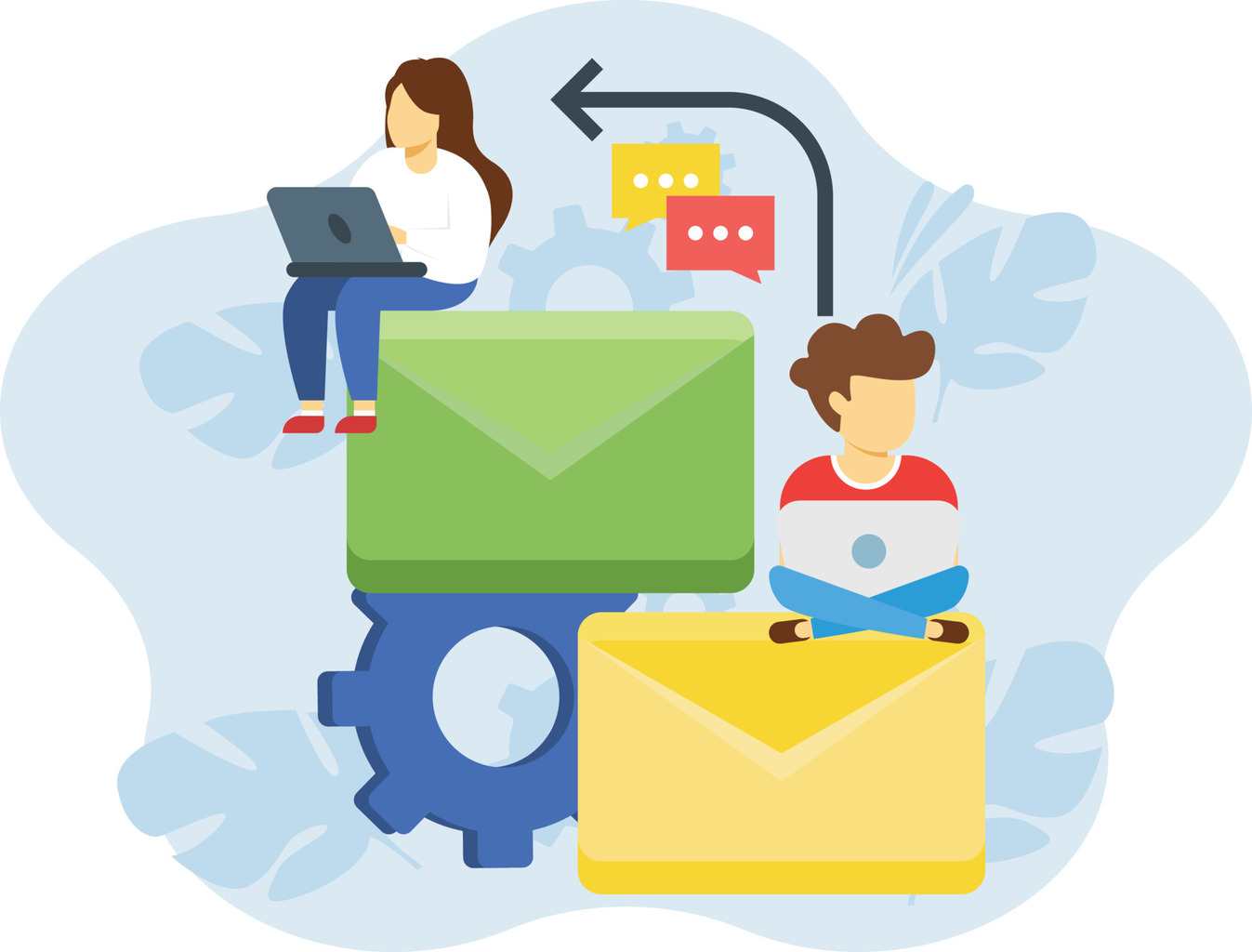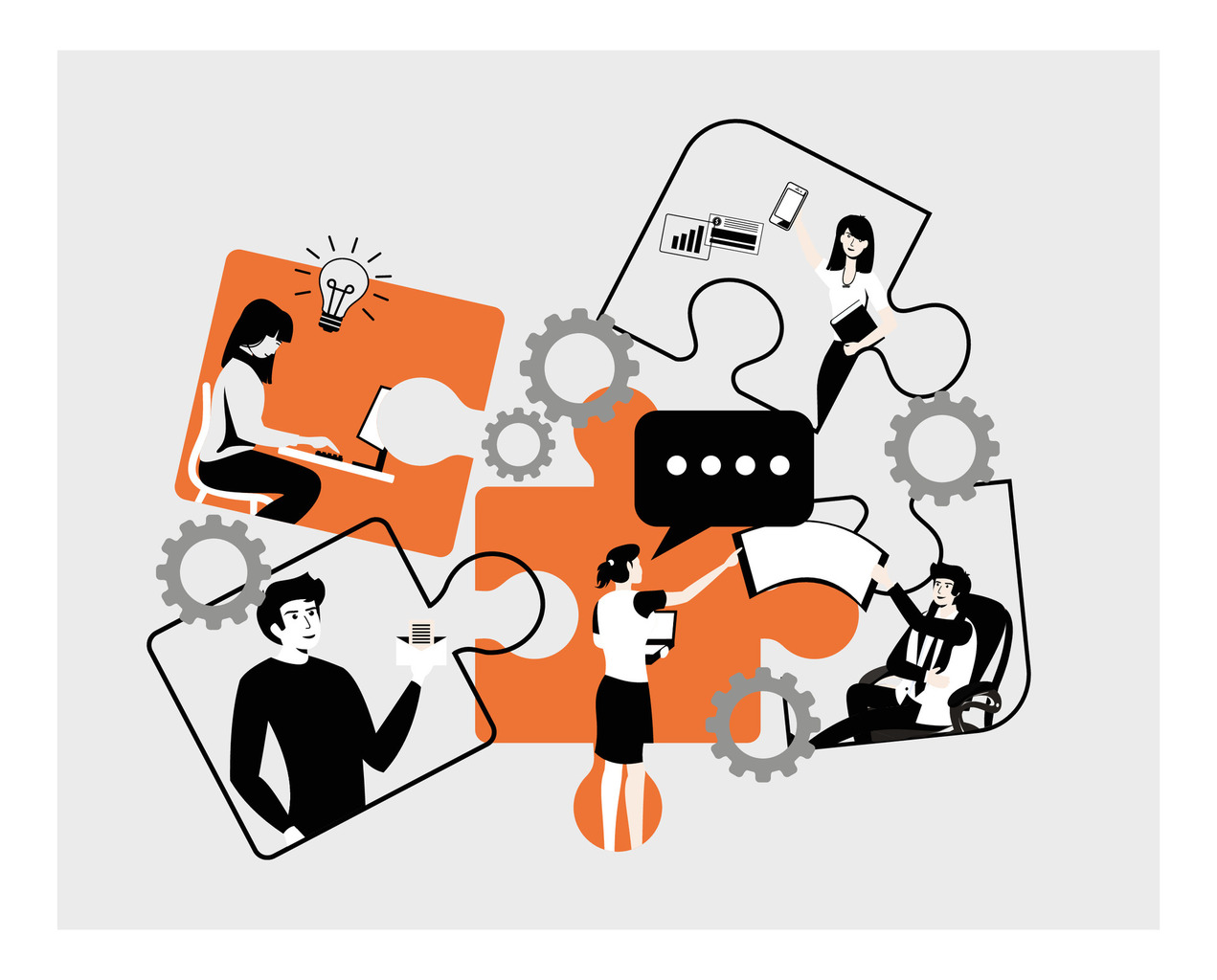Scaling in 2025: Why Small Businesses Need CRM Software
By 2025, small businesses face a landscape where personalized service and data-driven strategies clearly define success. Notably, with the global customer management tool market surpassing $73 billion last year, industries such as retail and financial services are leading in adoption rates. This surge, in turn, reflects a broader shift from outdated practices to dynamic systems that enhance operational efficiency.
At the same time, legacy approaches—such as manual data tracking, fragmented communication channels, and reactive workflows—continue to struggle in meeting rising consumer expectations. In many cases, teams relying on spreadsheets or basic email platforms miss valuable opportunities hidden within unstructured data. In contrast, centralized platforms now streamline repetitive tasks while simultaneously uncovering trends through predictive analytics.
Furthermore, adopting these solutions goes beyond simply keeping pace with competitors. In fact, organizations that leverage integrated systems report 17% faster response times and 23% higher customer satisfaction. Moreover, scalable architectures enable businesses to expand their capabilities without requiring a complete infrastructure overhaul, which makes them especially well-suited for growth-oriented operations.
In addition, decision-makers who prioritize these tools gain enhanced visibility into client behavior. For example, real-time dashboards highlight key elements such as sales pipelines, service gaps, and team performance metrics. As a result, this clarity empowers leaders to allocate resources more strategically, transforming insights into actionable plans.

Key Takeaways
- As of 2024, the customer management tool market grew to $73.4 billion, with the retail and finance sectors in particular leading in adoption rates.
- However, traditional methods such as spreadsheets continue to limit scalability and, as a result, hinder the delivery of personalized services.
- In contrast, automated workflows significantly reduce manual errors while accelerating response times by over 15%.
- Additionally, centralized data platforms enhance decision-making by offering real-time analytics along with accurate trend forecasting.
- Moreover, flexible systems can easily adapt to business growth without requiring costly infrastructure upgrades, making them ideal for scaling operations.
Understanding the Evolving CRM Landscape
What’s more, modern enterprises operate in a customer experience battleground. Centralized platforms now drive decision-making, with CRM software emerging as the backbone of client engagement strategies. Industries racing to adopt these tools aren’t just upgrading systems—they’re redefining how teams interact with customers.
Market Growth Trends in CRM Adoption
Grand View Research reveals the global CRM market hit $73.4 billion in 2024, growing at 14.6% annually through 2030. Retail and financial services dominate usage, but manufacturing and tech sectors now accelerate investments. This cross-industry demand signals a fundamental shift:
| Industry | Adoption Rate | Key Use Case |
|---|---|---|
| Retail | 32% | Personalized promotions |
| BFSI | 28% | Risk management |
| Manufacturing | 19% | Supply chain coordination |
| IT & Telecom | 17% | Service automation |
“Companies delaying CRM implementation risk becoming irrelevant in hyper-competitive markets.”
Shifting Competitive Dynamics
Not only that, organizations using advanced systems achieve 40% higher customer retention than laggards. Manual processes create friction—teams waste hours reconciling spreadsheets while rivals automate follow-ups. Early adopters capture 3x more leads through predictive analytics.
Similarly, one manufacturing firm slashed response times by 22% after deploying CRM tools. Their dashboard now tracks real-time inventory levels alongside client purchase histories. This integration fuels faster order fulfillment and targeted upsell campaigns.
The message is clear: customer relationship management isn’t optional. Teams leveraging these platforms turn casual buyers into brand advocates through seamless, data-powered interactions.
Why Small Businesses Need CRM Software to Scale in 2025
Likewise, growth-focused firms require centralized platforms to maintain momentum in competitive markets. These systems transform scattered data into actionable strategies, particularly for teams managing expanding client bases.
Core Advantages for Modern Operations
Therefore, centralized customer management tools deliver measurable improvements. Teams achieve 28% faster deal closures through predictive lead scoring. Automated tracking reveals cross-sell patterns in purchase histories, boosting average order values by 19%.
| Challenge | Traditional Approach | CRM Solution |
|---|---|---|
| Lead Conversion | Manual follow-ups | Automated prioritization |
| Regional Analysis | Spreadsheet guesswork | Geo-specific dashboards |
| Buyer Insights | Generic campaigns | Persona-based targeting |
“Platforms analyzing customer journeys reduce acquisition costs by 37% compared to manual methods.”
Building Adaptive Operational Frameworks
Indeed, scalable architectures allow firms to add features as needs evolve. A Midwest retailer increased repeat purchases by 41% after implementing modular workflows. Real-time sales mapping helps allocate resources to high-potential regions.
These systems future-proof operations through three key mechanisms:
- Automated trend detection in customer behavior
- Seamless integration with marketing tools
- Customizable reporting for strategic planning
Emerging companies leveraging these tools maintain agility while scaling. The result? Sustainable growth powered by data-driven client relationships.

Centralizing Customer Information
Consistent customer experiences begin with organized data. Modern teams can’t afford fragmented records scattered across emails, spreadsheets, or paper notes. Centralized platforms transform chaos into clarity through structured databases accessible to all departments.
Digital Rolodex Benefits
In fact, a CRM system acts as a searchable hub for customer information, storing names, contact details, and interaction histories. Unlike manual tracking methods, this digital approach eliminates duplicate entries and version control issues. Teams retrieve complete profiles in seconds instead of hunting through disconnected files.
| Manual Tracking | CRM Capabilities | Impact |
|---|---|---|
| Paper-based records | Cloud accessibility | 24/7 data availability |
| Spreadsheet errors | Automated validation | 98% accuracy rate |
| Email searches | Instant filters | 74% faster retrieval |
“Companies using centralized customer data systems resolve service requests 39% faster than those relying on manual methods.”
Similarly, intuitive interfaces prove critical for adoption. Platforms with drag-and-drop customization and visual dashboards see 83% higher employee engagement. When teams easily segment customers by purchase history or location, they craft targeted campaigns that drive repeat business.
Clearly, this organizational shift pays dividends beyond efficiency. Unified contact records help sales teams personalize pitches while service agents anticipate needs. The result? Relationships deepen, and loyalty becomes measurable.
Streamlining Sales and Lead Management
After that, operational excellence in client acquisition demands precision. Teams juggling multiple prospects require tools that turn chaotic pipelines into structured pathways. Of course, modern platforms transform how organizations handle emerging opportunities and nurture relationships.
Tracking Customer Interactions Effectively
Moreover, every touchpoint matters. Centralized systems capture customer interactions across emails, calls, and meetings. This eliminates guesswork when re-engaging dormant leads. Sales reps access complete histories instantly, maintaining context even when team members change.
Yet, automated logging reduces administrative burdens. One logistics company cut data entry time by 62% after adopting interaction tracking features. Real-time updates ensure all departments work from identical information, preventing miscommunication.
| Manual Tracking | CRM Tracking | Impact |
|---|---|---|
| Incomplete notes | Comprehensive logs | 43% fewer missed details |
| Delayed updates | Instant sync | 31% faster follow-ups |
| Isolated data | Shared visibility | 57% better team alignment |
Prioritizing and Managing Leads
As a result, not all prospects deserve equal attention. Intelligent scoring algorithms identify high-potential leads using engagement frequency and budget indicators. In fact this prevents teams from chasing dead-end opportunities.
In conclusion, a Midwest tech firm boosted conversions by 28% after implementing lead ranking. Their system now flags accounts showing webinar attendance combined with repeated pricing page visits. Sales reps focus efforts where they matter most.
“Organizations using predictive lead scoring achieve 19% higher win rates than those relying on intuition alone.”
Consequently, dynamic dashboards visualize pipeline health. Managers spot bottlenecks in real time—like stalled deals needing executive support. Automated reminders ensure no promising lead slips through cracks during expansion phases.
Enhancing Customer Retention and Satisfaction
Therefore, in competitive markets, maintaining loyal clients separates thriving operations from stagnant ones. Platforms that unify client data empower teams to deliver tailored experiences that boost satisfaction and repeat business. In order to, for insights on scaling strategies, explore this analysis of modern customer management systems.
Personalized Engagement Tactics
However, centralized systems store detailed interaction histories, enabling teams to anticipate needs before clients ask. Instant access to purchase patterns allows service agents to suggest relevant add-ons during support calls. This proactive approach reduces resolution times by 31% compared to reactive methods.
| Manual Approach | CRM-Driven Strategy | Impact |
|---|---|---|
| Generic email blasts | Behavior-triggered messaging | 47% higher open rates |
| Guessed preferences | AI-powered recommendations | 22% larger order values |
| Inconsistent follow-ups | Automated check-in sequences | 39% fewer client churn |
“Firms using personalized engagement tools see 58% longer client relationships than those relying on manual processes.”
For example, automated workflows transform casual buyers into advocates. Birthday discounts sent through preference-based channels demonstrate attentiveness. In fact, post-purchase surveys tied to specific products gather actionable feedback.
As a result, these strategies create emotional connections that spread through word-of-mouth referrals. When clients feel understood, they become partners in growth—not just revenue sources.
Leveraging Automated Workflows for Efficiency
For instance, operational agility now separates industry leaders from competitors. Integrated platforms eliminate bottlenecks by automating repetitive processes while synchronizing cross-channel communication. This shift allows teams to prioritize strategic initiatives over administrative busywork.
Time-Saving Integrations
To illustrate, modern systems connect email, chat, and messaging tools within a single interface. Sales reps respond to inquiries instantly through WhatsApp or live chat without switching apps. In order to, this unified approach reduces response delays by 55% compared to fragmented methods.
| Manual Approach | CRM-Driven Solution | Impact |
|---|---|---|
| Separate email clients | In-platform email management | 47% faster replies |
| Missed form submissions | Instant lead alerts | 68% fewer errors |
| Disconnected chat tools | Unified communication hub | 31% higher engagement |
Reducing Manual Administrative Tasks
Such as, automated workflows handle routine follow-ups and data entry. Preset email sequences trigger when prospects remain inactive for 72 hours. Teams reclaim 12+ hours weekly previously spent on manual updates.
“Organizations using workflow automation reduce task completion times by 63% while maintaining 98% process accuracy.”
As a result, discover how leading platforms enhance client interactions through intelligent automation. These tools automatically assign tasks based on deal stages, ensuring no critical action falls through cracks.
Let’s look at an example, by minimizing manual interventions, businesses achieve consistent service delivery at scale. Staff focus shifts from data management to relationship cultivation – the true growth driver in customer-centric markets.
Optimizing Sales Forecasting and Pipeline Management
In conclusion, accurate sales predictions separate thriving organizations from those stuck in reactive cycles. Centralized platforms transform raw data into strategic roadmaps, empowering teams to act with precision rather than guesswork.
Predictive Analytics for Better Outcomes
For instance, advanced tools analyze historical patterns to forecast revenue streams and identify high-potential deals. One logistics company improved forecast accuracy by 34% after adopting AI-driven trend detection. These systems flag risks like stalled opportunities or seasonal dips before they impact targets.
| Manual Approach | CRM-Driven Analysis | Result |
|---|---|---|
| Spreadsheet projections | Algorithmic trend mapping | 27% fewer errors |
| Quarterly reviews | Real-time adjustments | 19% faster corrections |
| Gut-feel prioritization | Lead scoring models | 41% higher win rates |
“Teams using predictive analytics achieve 22% shorter sales cycles by focusing resources on convertible leads.”
Data-Driven Decision Making
Ultimately, dynamic dashboards reveal pipeline bottlenecks through color-coded stages. Managers spot deals needing executive support or pricing adjustments instantly. Automated reports track metrics like lead response times and conversion rates across regions.
Key benefits include:
- Visual workflow mapping to streamline approval processes
- Automated alerts for expiring contracts or renewal opportunities
- Revenue projections based on real-time deal progression
Next, these capabilities enable firms to allocate budgets strategically. Marketing teams adjust campaigns using geographic performance data, while service departments anticipate demand spikes. The result? Cohesive growth strategies rooted in measurable insights.

Harnessing Marketing Intelligence and Personalization
So, modern marketing thrives on precision—delivering the right message to the right audience at the perfect moment. Centralized platforms now enable teams to transform raw data into resonant strategies that drive engagement. This shift turns generic outreach into meaningful conversations.
Effective Customer Segmentation Strategies
Let’s look at an example, CRM software organizes client data into actionable groups based on behavior, location, or purchase patterns. For example, frequent buyers might receive loyalty rewards, while inactive accounts trigger re-engagement campaigns. A retail brand increased email click-through rates by 33% after grouping contacts by product interests.
| Manual Segmentation | CRM-Driven Approach | Impact |
|---|---|---|
| Basic demographics | Behavioral triggers | 41% higher conversions |
| Static lists | Dynamic updates | 29% fewer unsubscribes |
| Guesswork campaigns | Predictive analytics | 55% better ROI |
“Brands using advanced segmentation tools see 3x more campaign revenue than those relying on broad targeting.”
Then, automated email sequences adapt to individual actions. Abandoned cart reminders or post-purchase surveys deploy without manual input. Social media integrations track trending topics, letting teams align content with audience interests in real time.
Choosing the right platform matters. Solutions like those in the top CRM solutions for targeted campaigns comparison offer tools for granular audience analysis. These systems turn scattered data into cohesive strategies that build lasting connections.
Improving Team Collaboration and Remote Access
For instance, in today’s mobile-first work environment, seamless collaboration defines operational success. Unified platforms erase barriers between office staff and field teams, ensuring every user contributes to shared goals. When data flows freely, decision-making accelerates.
Tools That Bridge Distances
Above all, modern CRM software operates flawlessly on smartphones and tablets. Sales reps update client records during meetings, while service teams access real-time inventory levels from job sites. This eliminates delays caused by outdated manual processes.
Key benefits include:
- Instant communication between departments via in-app messaging
- Centralized document sharing for consistent client responses
- Geo-tagged updates showing team availability across regions
A Midwest distributor reduced email overload by 71% after adopting these tools. Their salesforce now resolves customer queries 40% faster by pulling order histories during calls. Mobile access ensures no critical detail gets lost in transit.
Additionally, for teams evaluating options, this guide to top CRM tools compares features that enhance remote productivity. Robust systems turn scattered groups into synchronized units, driving growth through collective intelligence.
As can be seen, by prioritizing flexible management solutions, organizations future-proof operations against shifting work trends. The result? Teams perform at peak capacity—whether they’re across the desk or across the country.


